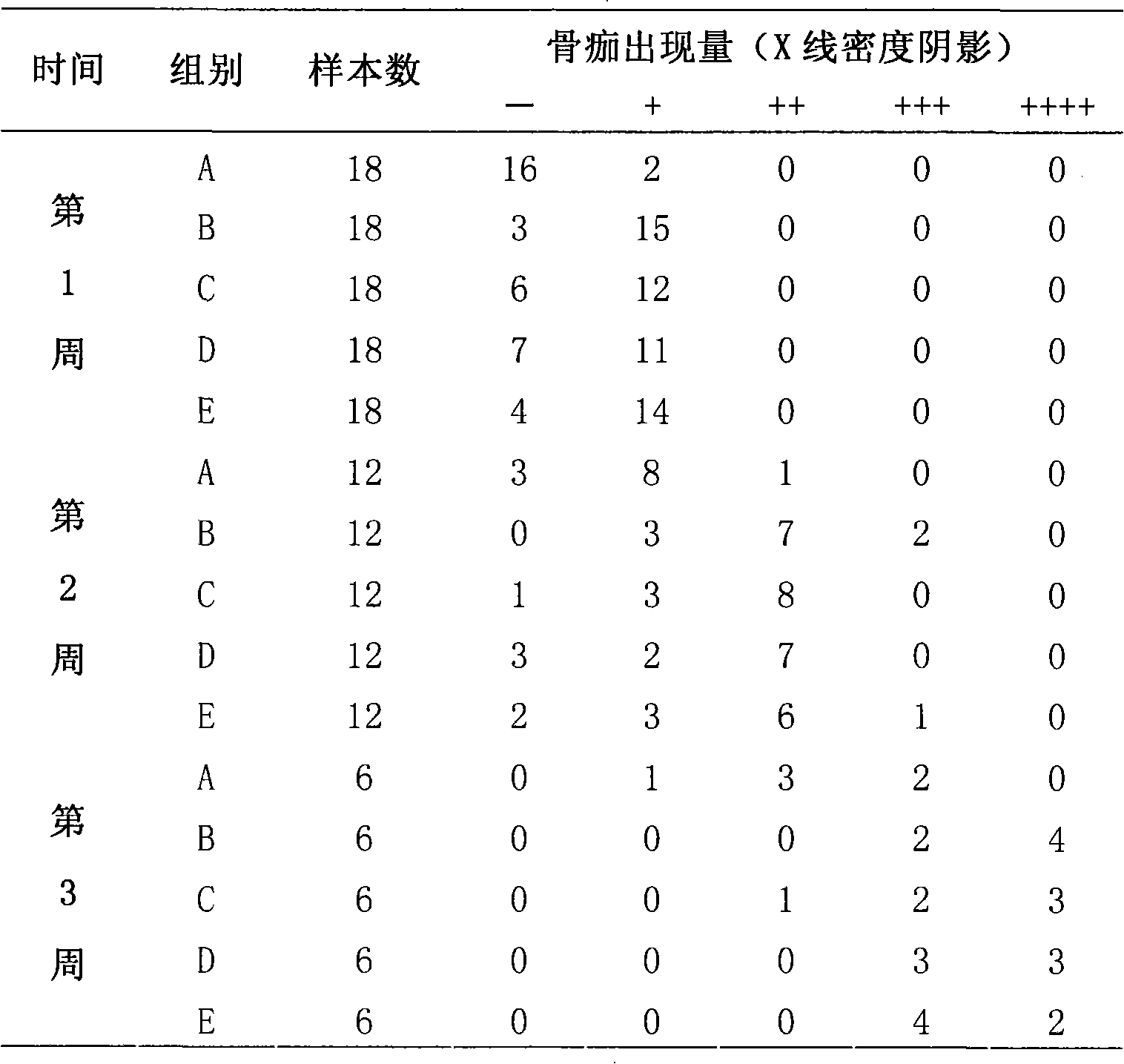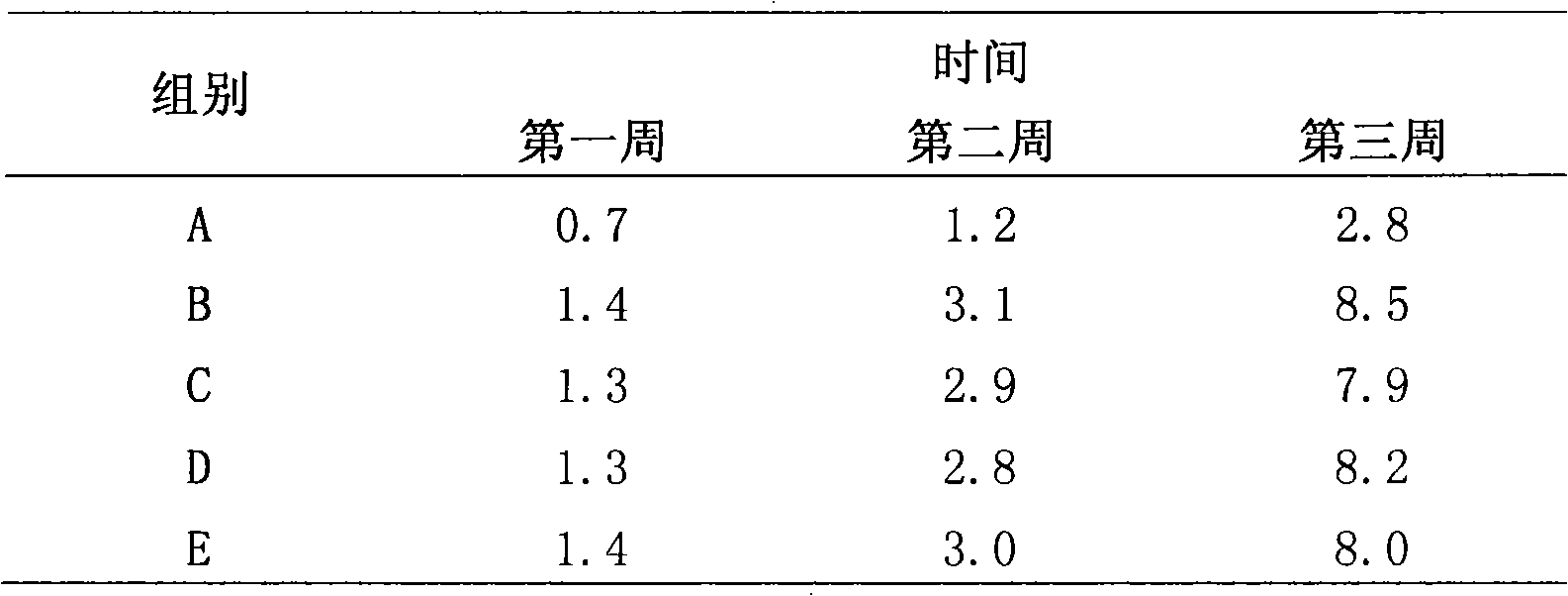High-strength adhesive for treating fracture
A technology for the treatment of fractures and adhesives, applied in the field of high-strength adhesives, can solve problems such as poor injectability, inability to fill and repair places that need to be treated, and low mechanical strength, so as to accelerate biological mechanisms and promote rapid healing effect
- Summary
- Abstract
- Description
- Claims
- Application Information
AI Technical Summary
Problems solved by technology
Method used
Image
Examples
Embodiment 1
[0010] Dissolve 300mg of polyglycolic acid and 260mg of polylactic acid in 80ml of acetone to obtain solution A; dissolve 200mg of artificial protein A, 300mg of protein collagen, 100mg of biological enzyme, and 280mg of biologically active calcium in 450ml of pH7.2 phosphate buffer solution , to obtain solution B; at -4 ° C, quickly inject solution A into solution B under stirring at a speed of 800 rpm and continue to stir under magnetic conditions until the polylactic acid and polyglycolic acid ultrafine particles are solidified; the product obtained in the step After centrifugation at 10,000 revolutions / separation, washing with water and freeze-drying, ultrafine particles of high-strength adhesive are obtained. Add 20ml of distilled water to disperse evenly to obtain a high-strength adhesive.
Embodiment 2
[0012] Weigh 100mg of polyglycolic acid and 400mg of polylactic acid and dissolve in 90ml of acetone to obtain solution A; dissolve 300mg of artificial protein A, 200mg of protein collagen, 200mg of biological enzyme, and 100mg of bioactive calcium in 400ml of pH7.2 phosphate buffer solution , to obtain solution B; at -4 ° C, quickly inject solution A into solution B under stirring at a speed of 1000 rpm and continue to stir under magnetic conditions until the polylactic acid and polyglycolic acid ultrafine particles are solidified; the product obtained in the step After centrifugation at 10,000 revolutions / separation, washing with water and freeze-drying, ultrafine particles of high-strength adhesive are obtained. Add 10ml of distilled water to disperse evenly to obtain a high-strength adhesive.
Embodiment 3
[0014] Weigh 500mg of polyglycolic acid and 100mg of polylactic acid and dissolve in 85m] acetone to obtain solution A; dissolve 100mg of artificial protein A, 400mg of protein collagen, 50mg of biological enzyme, and 500mg of bioactive calcium in 600ml of pH7.2 phosphate buffer solution , to obtain solution B; at -4 ° C, quickly inject solution A into solution B under stirring at a speed of 1100 rpm and continue to stir under magnetic conditions until the polylactic acid and polyglycolic acid ultrafine particles are solidified; The product is centrifugally separated at 10,000 rpm, washed with water, and freeze-dried to obtain ultrafine particles of high-strength adhesive. Add 50ml of distilled water to disperse evenly to obtain a high-strength adhesive.
PUM
 Login to View More
Login to View More Abstract
Description
Claims
Application Information
 Login to View More
Login to View More - R&D
- Intellectual Property
- Life Sciences
- Materials
- Tech Scout
- Unparalleled Data Quality
- Higher Quality Content
- 60% Fewer Hallucinations
Browse by: Latest US Patents, China's latest patents, Technical Efficacy Thesaurus, Application Domain, Technology Topic, Popular Technical Reports.
© 2025 PatSnap. All rights reserved.Legal|Privacy policy|Modern Slavery Act Transparency Statement|Sitemap|About US| Contact US: help@patsnap.com


